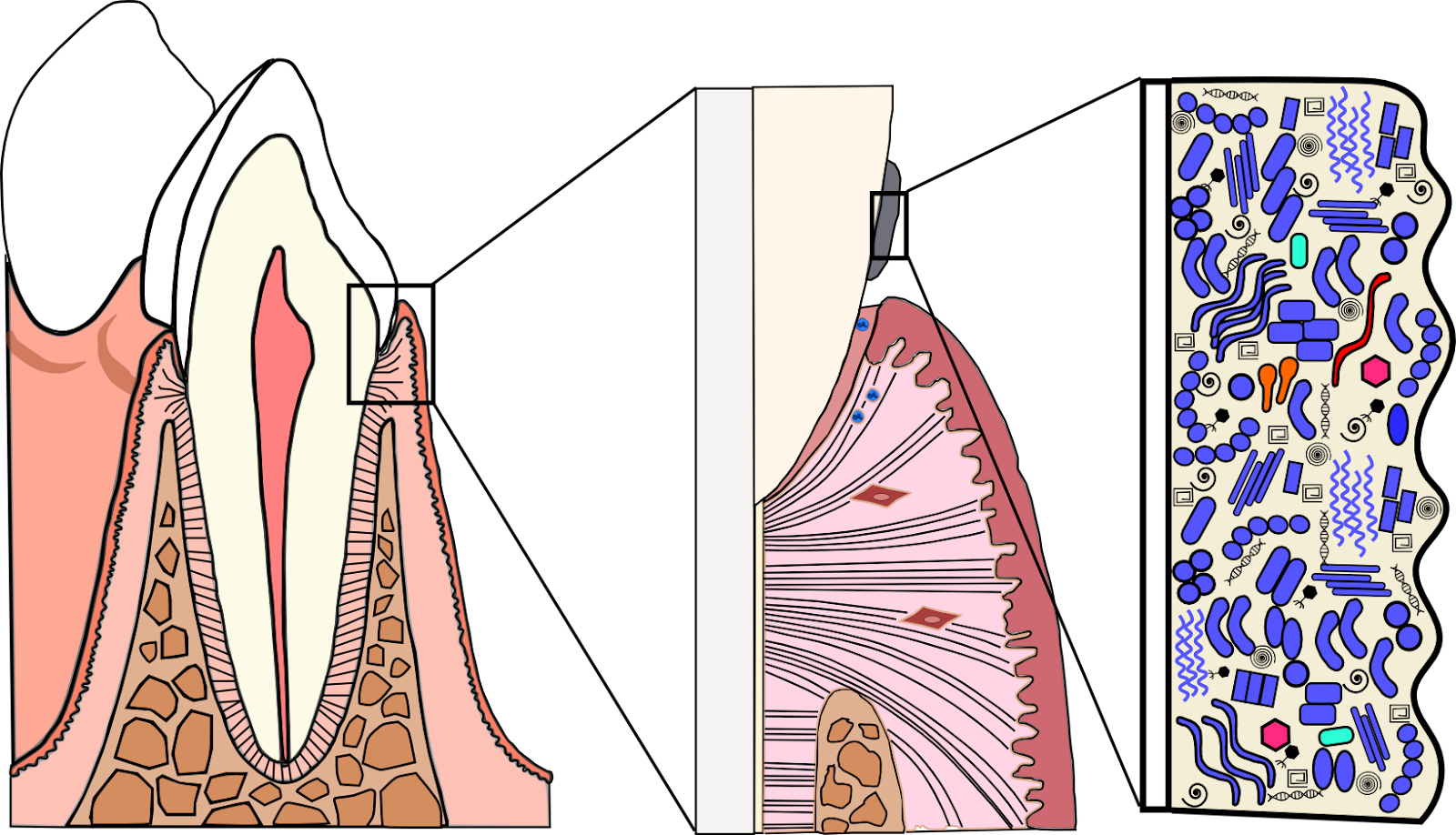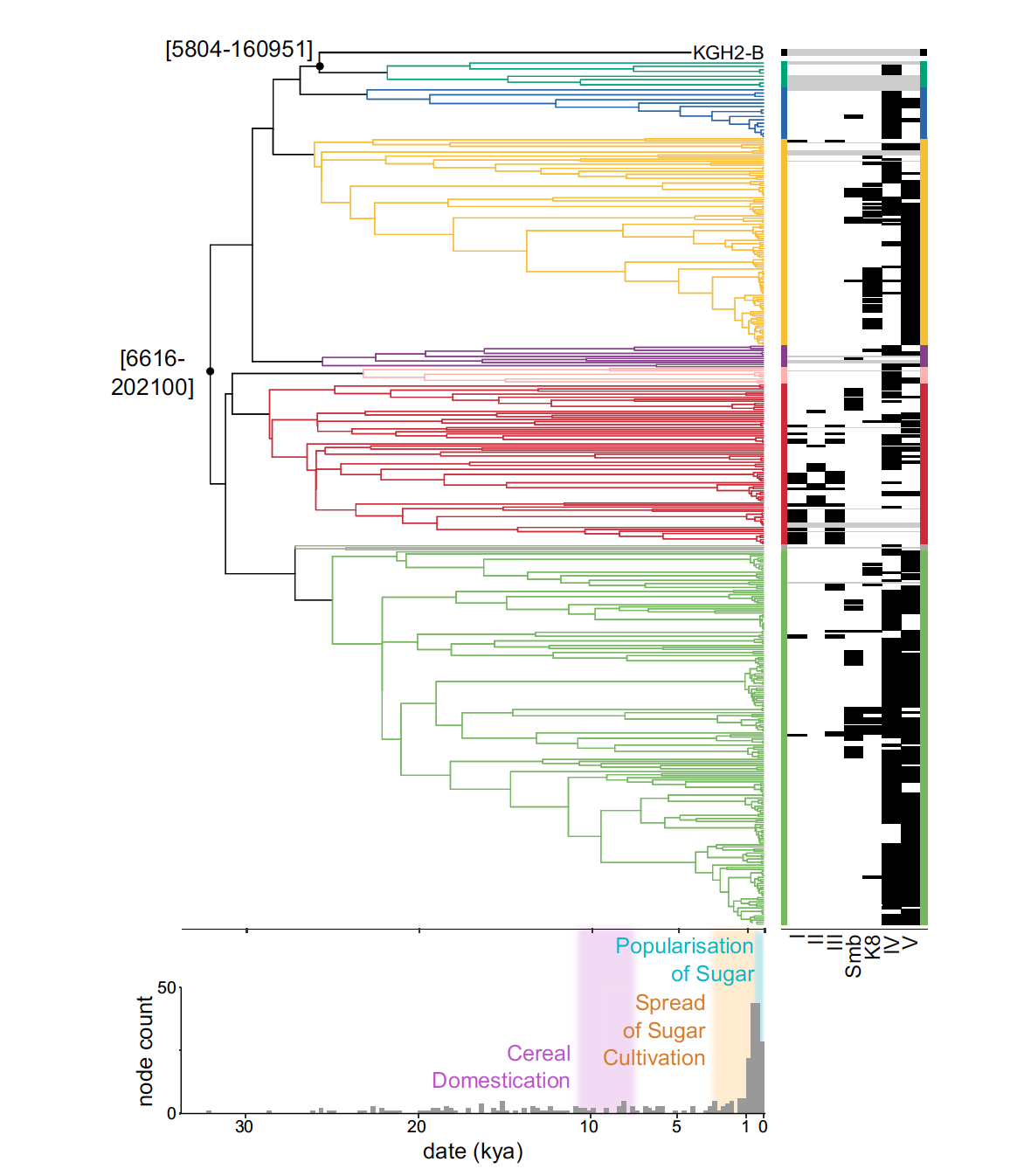Ancient oral microbiome
The human oral microbiota is highly diverse and has a complex ecology, including numerous species and strains of bacteria, microeukaryotes, archaea and viruses. This oral microbiome interfaces with the immune system of the human host and has an important role in not only the health of the oral cavity, but in the health of the organism as a whole 1
Ancient microbial genomes can shed light on the evolution of pathogens over millennia, and teeth provide a rich substrate for such studies. In a recent paper, conducted in collaboration between archaeologists at Trinity College Dublin, Atlantic Technological University and the University of Edinburgh, and published in the journal Molecular Biology and Evolution (2), researchers have recovered remarkably preserved microbiomes from two 4,000-year-old teeth belonging to the same male individual found in an Irish limestone cave. Genetic analyses of these microbiomes reveal important changes in the oral microenvironment from the Bronze Age to the present day.

Iseult Jackson and her colleagues identified in these teeth several bacteria associated with gum disease, a highly polymicrobial disease, and provided the first high-quality ancient genome of Streptococcus mutans, the main culprit of dental caries and not preserved in fossil dental plaque. While S. mutans is very common in modern mouths, it is exceptionally rare in the ancient genomic record. Its lack of preservation in ancient microbiomes may be largely due to its acidogenic nature; acid degrades DNA and prevents mineralization of plaque, which is the main substrate used for sampling. Their absence may also reflect less favorable habitats for S. mutans throughout most of human history. The archaeological record shows an upturn in dental caries following the adoption of cereal agriculture thousands of years ago, but there has been an even more dramatic increase in the last few hundred years when sugary foods were introduced to the general population 2.

The teeth in the sample were part of a larger skeletal assemblage excavated from Killuragh Cave in County Limerick. While other teeth in the cave showed advanced tooth decay, no decay was evident in the sample teeth. However, one tooth produced an unprecedented amount of S. mutans DNA compared to other oral streptococci, a sign of an extreme imbalance in the oral microbial community, known as a dysbiosis. The high abundance of this bacterium in this 4,000-year-old tooth is an extraordinarily rare finding and suggests that this man was at high risk of developing caries just before his death, according to the study’s lead author. The researchers also found that other streptococcus species were virtually absent from this dental microbiota. This indicates that the natural balance of the oral biofilm had been disrupted: the S. mutans had outcompeted the other streptococci, resulting in the pre-disease state.
The team also found evidence to support the “disappearing microbiome” hypothesis, according to which modern microbiomes are less diverse than those of our ancestors. This is a cause for concern, as the loss of biodiversity may affect human health. The two Bronze Age teeth contained highly divergent strains of Tannerella forsythia, a bacterium implicated in gum disease. Two strains extracted from the same ancient mouth were more genetically different from each other than any pair of modern strains in available databases, even though the modern samples came from Europe, Japan and the U.S., explains Jackson. «This represents a significant loss of diversity that we need to better understand.» 3
The authors also found evidence of a rapid expansion in T. forsythia population size that began approximately 600 years ago. This is likely caused by a combination of factors, such as changes in host demographics and population size. An increase in virulence factors was also observed over this time interval, indicative of a major adaptive episode driven by changes in the oral microenvironment. Over the past 750 years, a single lineage of T. forsythia has become dominant worldwide. This is a telltale sign of natural selection, in which one strain rapidly increases in frequency because of some genetic advantage it possesses over others. T. forsythia strains from the industrial era onward contain many novel genes that help the bacterium colonize the mouth and cause oral disease.
Phylogenetic analysis indicates significant post-medieval population expansions for both species, highlighting the enormous impact of dietary changes in recent centuries. In T. forsythia, this expansion is associated with the replacement of older lineages, possibly reflecting a genome-wide selective sweep and dramatic changes in the virulence repertoire of T. forsythia over this period. S. mutans shows an opposite pattern, with deeply divergent lineages persisting in modern populations. This may be due to its highly recombinant nature, which allows exchange of genetic material between strains. This means that an advantageous innovation can spread through S. mutans lineages as a new piece of technology. This ability to easily share innovations may explain why this species retains many diverse lineages without one becoming dominant and replacing all others. These two disease-causing bacteria have changed dramatically from the Bronze Age to the present day, but it appears that very recent cultural transitions in the industrial era have had an inordinate impact. Nevertheless, the analysis indicates major changes in the demographics and function of S. mutans that coincide with the popularization of sugar during the industrial period. S. mutans is one of the few oral taxa to show a significant increase in abundance between the medieval and modern microbiomes, causing a modern disease: caries.
References
- Baker, J.L., Mark Welch, J.L., Kauffman, K.M. et al. (2024) The oral microbiome: diversity, biogeography and human health. Nat Rev Microbiol doi: 10.1038/s41579-023-00963-6 ↩
- Jackson I, Woodman P, Dowd M, Fibiger L, Cassidy LM (2024) Ancient Genomes From Bronze Age Remains Reveal Deep Diversity and Recent Adaptive Episodes for Human Oral Pathobionts Molecular Biology and Evolution doi: 10.1093/molbev/msae017 ↩
- Trinity College Dublin. Scientists extract genetic secrets from 4,000-year-old teeth to illuminate the impact of changing human diets over the centuries. ScienceDaily. ScienceDaily, 27 March 2024. ↩